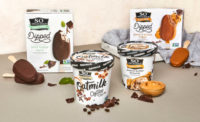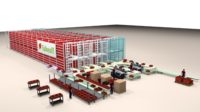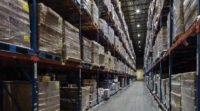Disruption can be defined as a break or interruption in the normal course. Currently, the disruption known as COVID-19 has obviously led to many breaks and interruptions to the normal course — but it could be only the precursor to bigger disruptions in retail and along the cold chain to come.
In the past year, all grocery sales spiked in volume as consumers avoided indoor dining at restaurants, whether by choice or by law. While the sometimes irrational demand for toilet paper received wide publicity, demand for frozen food also soared. Sales volume has tempered significantly since then, but sustained gains made by frozen foods are 2x all other grocery combined, according to research by 210 Analytics and IRI.
As an example, meat sales have historically been regarded as an in-person purchase, but at the initial peak of the pandemic, Omaha Steaks sales were up 800%. Even though many shoppers ventured back to supermarkets, year-over-year growth rates for online butchers such as Omaha Steaks, Crowd Cow and Butcher Box settled at a manageable growth rate in the 100% to 200% range through the end of 2020.¹
While we all know that e-commerce has grown steadily over the past decade, it's still astounding to realize that the pandemic was the catalyst for the next 10 years of growth being realized in 3 months.²
So it’s understandable to see how the appeal of ordering groceries online and having them delivered or ready for pickup would spawn similar growth in demand for delivery companies such as Instacart. This is now leading to the emergence of micro-fulfillment solutions where automation technology employ goods-to-person and goods-to-robot picking. Micro-fulfillment solutions can pick orders up to 15 times faster than the typical delivery company shopper, with nearly complete order accuracy. The costs and lead times to implement micro-fulfillment solutions have been dropping steadily. They can be installed in back rooms of active grocery stores or give new life to abandoned retail space such as shopping malls and be used to fulfill orders from “dark stores.”
"Given the general indifference of robotics to temperature conditions, it's easy to see how automation is attractive for cold chain DTC applications."
The growth of e-commerce has not been limited to retailers. Food producers have been moving toward direct-to-consumer (DTC) online sales at a startling rate. Many are among the most dominant players in the retail category of consumer product goods (CPGs). In fact, of the 11 companies that account for 70% of all CPG sales, most are food producers.³
Today, food producers ship most often in pallet or layer quantities, occasionally at a case level. E-commerce requires fulfillment at an item or “each” level. Increasingly, consumers are gravitating towards DTC because they have more choices, can add personalization and create mix-and-match assortments typically not available from retail outlets.
This more granular level of order fulfillment represents an entire re-engineering of the food producer distribution network. Increasingly, they're accommodating this added distribution pain to gain direct consumer connection, strengthen brand loyalty and provide a personalized end-to-end customer experience. As recently stated in a paper by McKinsey & Company, “They [food producers] can control the ‘zero moment of truth’ — a term coined by Google to refer to the online research that consumers undertake before making a purchase.”⁴
Some CPG companies, such Unilever, entered the DTC market through acquisition. Others have entered by partnering, such as Lindt with Shopify or Tyson with Amazon.
CPG DTC order volumes are following the growth trajectory led by retail e-commerce. Because of this, automation is becoming a necessity to handle both the speed and increased complexity of fulfilling individual consumer orders. Here are some examples:
- Industry leaders like PepsiCo are looking to implement micro-fulfillment automation for their DTC fulfillment needs.
- Robotics have been a staple in palletizing for over a decade. However, robotics for picking individual items for order fulfillment is rapidly becoming commonplace as well.
- The COVID-19 pandemic changed order patterns and demands virtually overnight. Artificial intelligence (AI) with deep learning and adaptive algorithms has become a key tool to ensure automated fulfillment systems can rapidly adapt to the different SKU mixes and changing order profiles.
Given the general indifference of robotics, technology and software to temperature conditions, it's easy to see how automation is especially attractive for cold chain DTC applications. But as consumers continue to gravitate towards online purchases and food companies increasingly grow their DTC channel, what will food retail look like in the future? What we’re experiencing now may just be the beginning of the disruption.
REFERENCES
1. https://dfdnews.com/2020/12/11/meat-delivery-companies-find-rare-opportunity-in-the-pandemic/
2. https://www.shopify.com/enterprise/the-future-of-ecommerce/omnichannel
3. https://capitaloneshopping.com/blog/11-companies-that-own-everything-904b28425120









